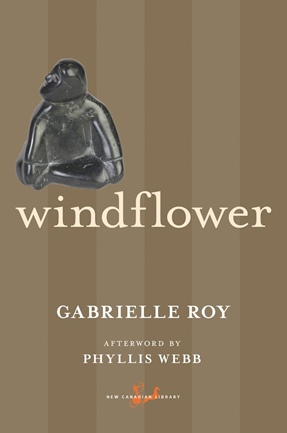Description
Set against the austere landscape of northern Labrador, Windflower is the poignant story of Elsa Kumachuk, a young Inuit woman torn between two worlds by the birth of her blond-haired, blue-eyed son. Unacknowledged by his father, an American GI, the child is welcomed into the Inuit community with astonishment and delight. Elsa, however, must come to terms with the conflicting values implied by her son’s dual heritage.
Gabrielle Roy’s last novel, Windflower is both a moving account of one woman’s tragic dilemma and a sensitive portrait of a society in transition.
About the Author
Gabrielle Roy was born in March 1909 in Saint-Boniface, Manitoba, the youngest of eleven children. Her mother and father, then, were relatively old at the time of her birth -- 42 and 59 respectively. Like Christine's father in Rue Deschambault (Street of Riches), Léon Roy worked as a colonisation officer for the Department of Immigration, a position he held between 1897 and 1915. His politically motivated dismissal occurred six months before his retirement, thus leaving Roy with no pension to support his family. The family's financial predicament during Gabrielle's youth precluded any chance of her attending university, despite having earned stellar marks throughout high school which put her as one of the top students in the entire province. In 1927, after graduating from grade twelve, she enrolled at the Winnipeg Normal Institute where she completed her teacher training.After teaching in the rural communities of Marchand and Cardinal, where she taught for a year, Roy returned to Saint-Boniface. There she accepted a teaching job at the Académie Provencher boy's school, a position she held from 1930-37. During this period, Roy began actively pursuing her interest in acting and joined the Cercle Molière theatre troupe. Her experiences as an actor inspired her to leave her teaching position and travel to Europe to study drama. Spending between 1937 and 1939 in Britain and France, the fluently bilingual Roy studied acting for six months before concluding that she did not desire to pursue a career in the theatre. In the meantime, she had also begun to write articles about Canada for newspapers in Paris and pieces on Europe for newspapers in Manitoba and came to realize that writing could be her vocation.Over the course of her lengthy and prolific career, Gabrielle Roy received many honours, including three Governor General's Awards (1947, 1957, 1978), the Prix Fémina (1947), the Companion of the Order of Canada (1967), the Medal of the Canada Council (1968), the Prix David (1971), and the Prix Molson (1978).
